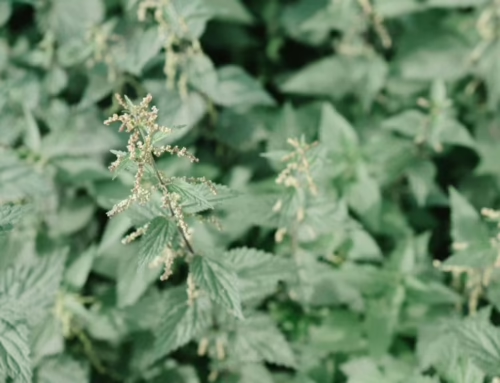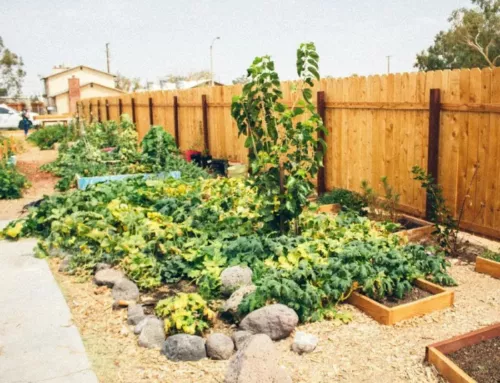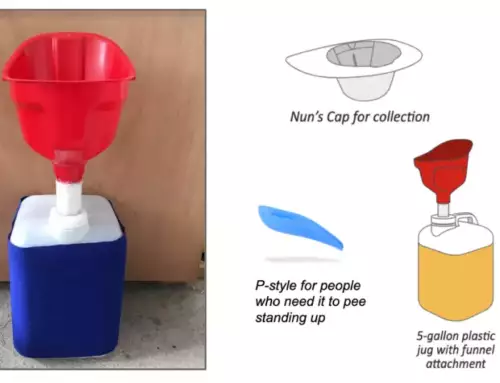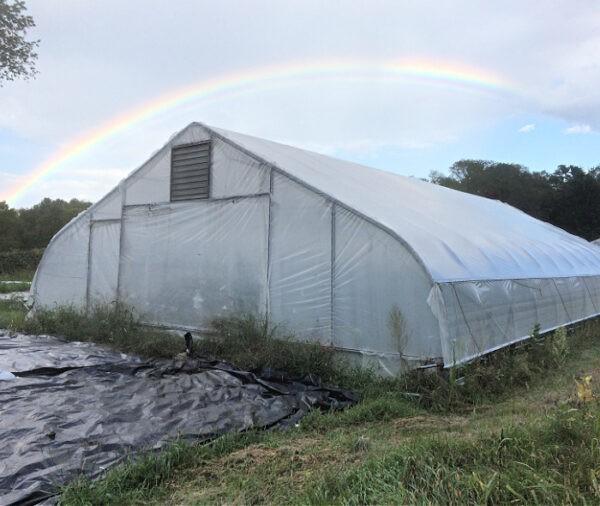
Photo courtesy Richard Robinson
By Richard Robinson, Farmer at Hopestill Farm
A hoophouse represents a major capital investment for the market gardener, and one that can pay for itself quickly and many times over. I’ll be presenting two workshops about integrating a hoophouse into your growing operation at the 2023 NOFA/Mass Winter Conference on the weekend of Saturday January 14th, the first covering design and construction, and the second covering growing for production and profit. Here, I’ll present some main points from the first workshop.
There are many choices in design, each of which will have an impact on cost, ease of construction, weather resistance, ease of use, or suitability for specific crops. After growing in hoophouses for more than a decade, here are some considerations:
Choose a gothic frame. A gothic frame will shed snow more readily than a Quonset frame, reducing the risk of collapse when we get a heavy, wet snowfall. Each bow should be reinforced with a cross-piece, and ideally with struts that angle back up to the bow, to make a solid truss. The truss also provides the strength you need to hang tomatoes or cucumbers from the frame. Even with a gothic frame, you will want to be able to blow or plow snow away from the sides, to avoid winter-long snow buildup against the frame.
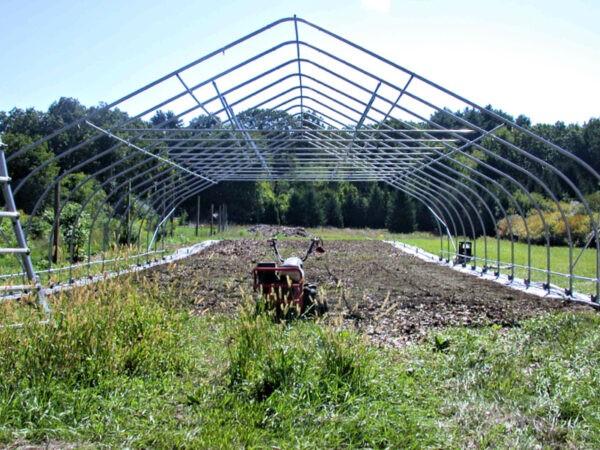
Photo courtesy Richard Robinson
Design your endwalls for strength against the wind, and ease of entry. Even if you order a complete hoophouse kit, you will probably be on your own in choosing how to design and construct your endwalls. Framing the wall so that no section is wider than 12’ between supports will keep the risk of wind damage lower. Doors should be wide enough to allow a full wheelbarrow to pass through easily, at an angle. 36” is a minimum, in my experience. If you are planning to bring in larger equipment, design accordingly.
Real doors are expensive, and might be a place to save. The most inexpensive doors from a popular hoophouse supplier cost between $500 and $1000. For all my “doors,” I use a long piece of greenhouse plastic, held in place with wiggle wire on the side and a couple sandbags on the bottom. Not great, but remarkably not terrible, either.
Consider taller sides. The edge beds in my hoophouses don’t get the same love that the middle ones do, because they are harder to work. The bows begin to bend inward at about 4 feet, so I need to stoop over to work the outer portion of the beds. Longer ground posts would solve that problem. On the other hand, it would raise the cross pieces from which I hang my tomatoes, meaning I’d be doing a lot of ladder work to get the trellises installed.
For longer houses, install a geared roll-up crank. Hoophouses need roll-up sides to prevent overheating, and during spring and fall, they are typically rolled up every morning and down every night. The sides on my 48’ houses are easy to roll up, while those on my 96’ house are a real bear—I can do it, but I don’t like it. Last year I installed 5:1 gear boxes on the longer ones, and they are a pleasure to use. Instead of 8 turns to roll the side up, it now takes 40, but each one is a breeze. You can add these after construction, if you are unsure if you need them.
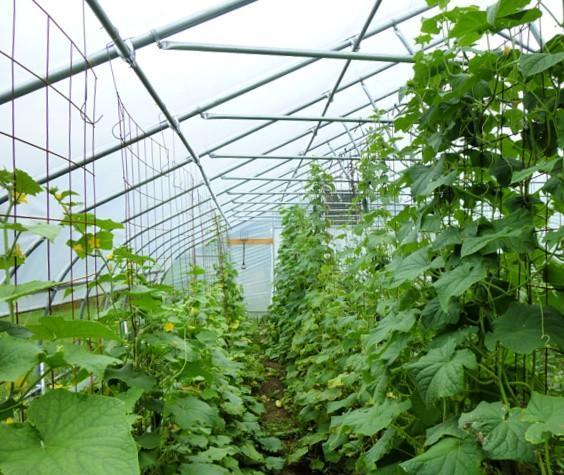
Photo courtesy Richard Robinson
I’ll be discussing much more about hoophouse siting, design, and construction at these workshops during the Winter Conference:
Your First Hoophouse, Part 1: Siting, Design and Construction
A hoophouse is a major capital investment for the market grower, and can offer major rewards. Design, placement, construction, operation, and management all come with steep learning curves. In Part 1 of this two-part workshop, we’ll cover choosing the right house and getting it built. Topics include site prep, designing for strength, endwall choices, building tips, and special considerations for rolling hoophouses. The emphasis will be on designs for growing in soil in an unheated house. Parts 1 and 2 are independent, and you may choose to attend both or only one.
Your First Hoophouse, Part 2: Growing Year-Round
A hoophouse offers the market farmer or serious gardener enormous opportunities for increasing production of highly valuable crops and significantly extending the growing season, even without supplemental heat or electricity. In Part 2 of this two-part workshop, we’ll cover year-round growing in the ground in an unheated house. Topics include crop choice, timing, economics, and management of water, fertility, insects, and disease. The emphasis will be on crops with the greatest potential for a quick return on your investment. Parts 1 and 2 are independent, and you may choose to attend both or only one.
Check out the rest of the farming, gardening and food systems workshops, along with the full conference agenda here. Registration is available on a sliding scale. See you there!

